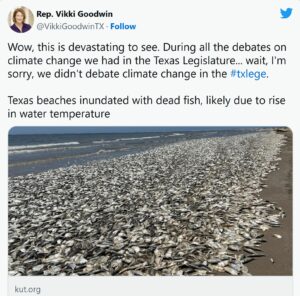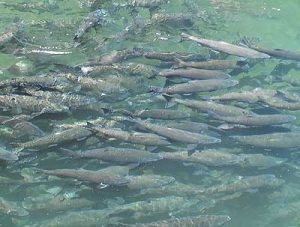
by Leslie Layton
commentary posted June 19
The photos this past week that showed tens of thousands of dead fish washing ashore on the Texas Gulf were haunting. Then, reports surfaced that dead wild birds were washing up on the Pacific Coast of Mexico, too.
‘Haunting’ became macabre.
Temperatures around the world soared, breaking records in Mexico and producing the hottest June day on record in Mexico City that sits more than 7,000 feet high. The Canadian wildfires turned some smoke-filled skies in the Northeast an eerie orange, and ocean temperatures underwent a “sudden escalation” because of global warming combined with natural events like an El Niño.

